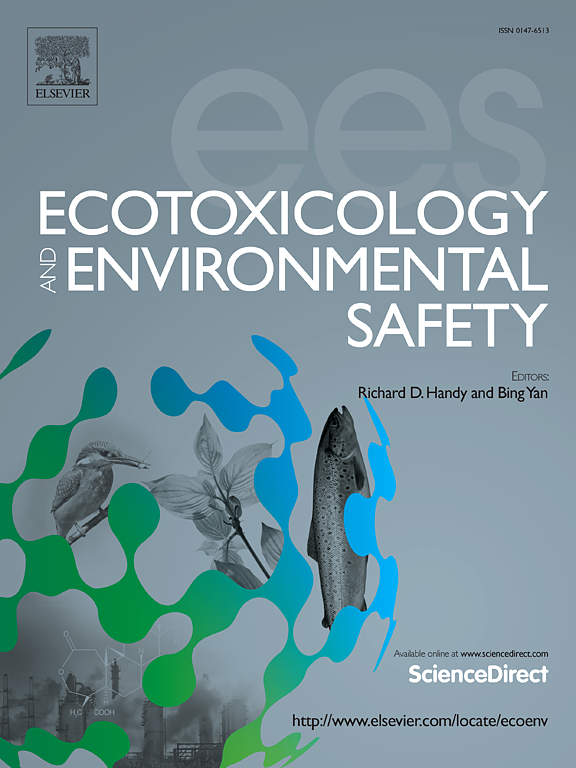大学生接触微塑料与抑郁症状之间的关系
IF 6.2
2区 环境科学与生态学
Q1 ENVIRONMENTAL SCIENCES
引用次数: 0
摘要
本文章由计算机程序翻译,如有差异,请以英文原文为准。
Association between microplastics exposure and depressive symptoms in college students
Background
Microplastics (MP) are pervasive environmental pollutants that have raised concerns regarding their potential health effects. However, limited studies have investigated the relationship between MP exposure and depression, particularly in college students. Our study aims to examine the association between MP exposure and depressive symptoms in college students.
Methods
A total of 1420 college students from Jiangsu College of Nursing, China, were included in this cross-sectional study. Depressive symptoms were assessed using the Patient Health Questionnaire-2 (PHQ-2), and MP exposure was estimated based on daily airborne MP concentration and drinking-water MP levels. Multivariate logistic regression models were used to estimate the associations between MP exposure and depressive symptoms.
Results
The prevalence of depressive symptoms among college students was 61.8 %. The median (interquartile range) of total MP exposure was 17403.7 (14174.8–20995.9) particles/day. Airborne MP exposure exhibited positive associations with depressive symptoms, while no significant association was found between drinking-water MP exposure and depressive symptoms. Compared with participants in the lowest quartile of MP exposure, those in the highest quartile of total MP exposure had 38 % higher odds of experiencing depressive symptoms (odds ratio [OR] = 1.38, 95 % CI: 1.21–1.57). When treated as a continuous variable, each 1000-particle increase in total MP exposure was associated with a 7.0 % increase in the odds of depressive symptoms (OR = 1.07, 95 % CI: 1.04–1.10). Stratified analyses indicated that the association between MP exposure and depressive symptoms was stronger among male students and freshmen.
Conclusion
This study suggests MP exposure is a contributing factor for depressive symptoms in college students.
求助全文
通过发布文献求助,成功后即可免费获取论文全文。
去求助
来源期刊
CiteScore
12.10
自引率
5.90%
发文量
1234
审稿时长
88 days
期刊介绍:
Ecotoxicology and Environmental Safety is a multi-disciplinary journal that focuses on understanding the exposure and effects of environmental contamination on organisms including human health. The scope of the journal covers three main themes. The topics within these themes, indicated below, include (but are not limited to) the following: Ecotoxicology、Environmental Chemistry、Environmental Safety etc.

 求助内容:
求助内容: 应助结果提醒方式:
应助结果提醒方式:


